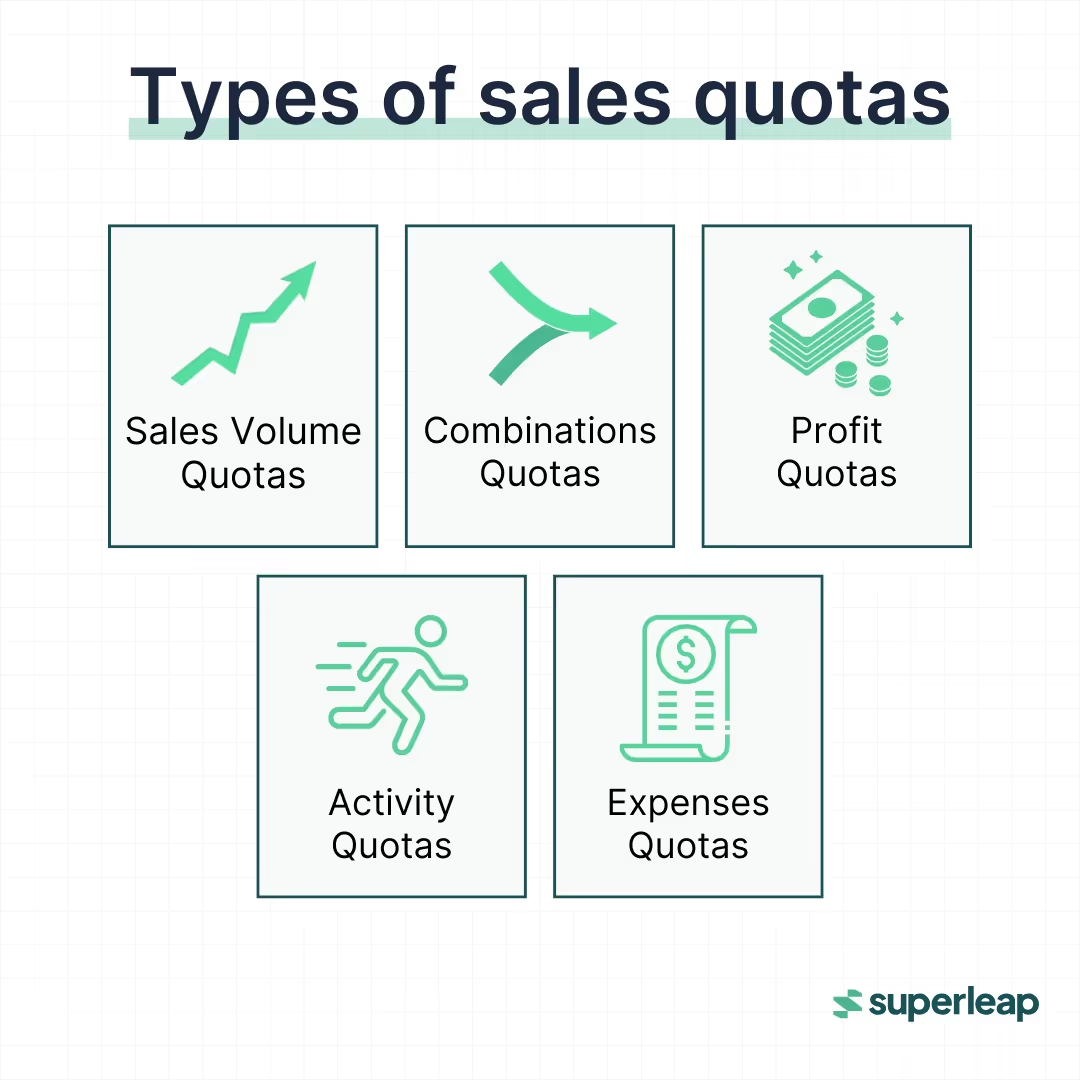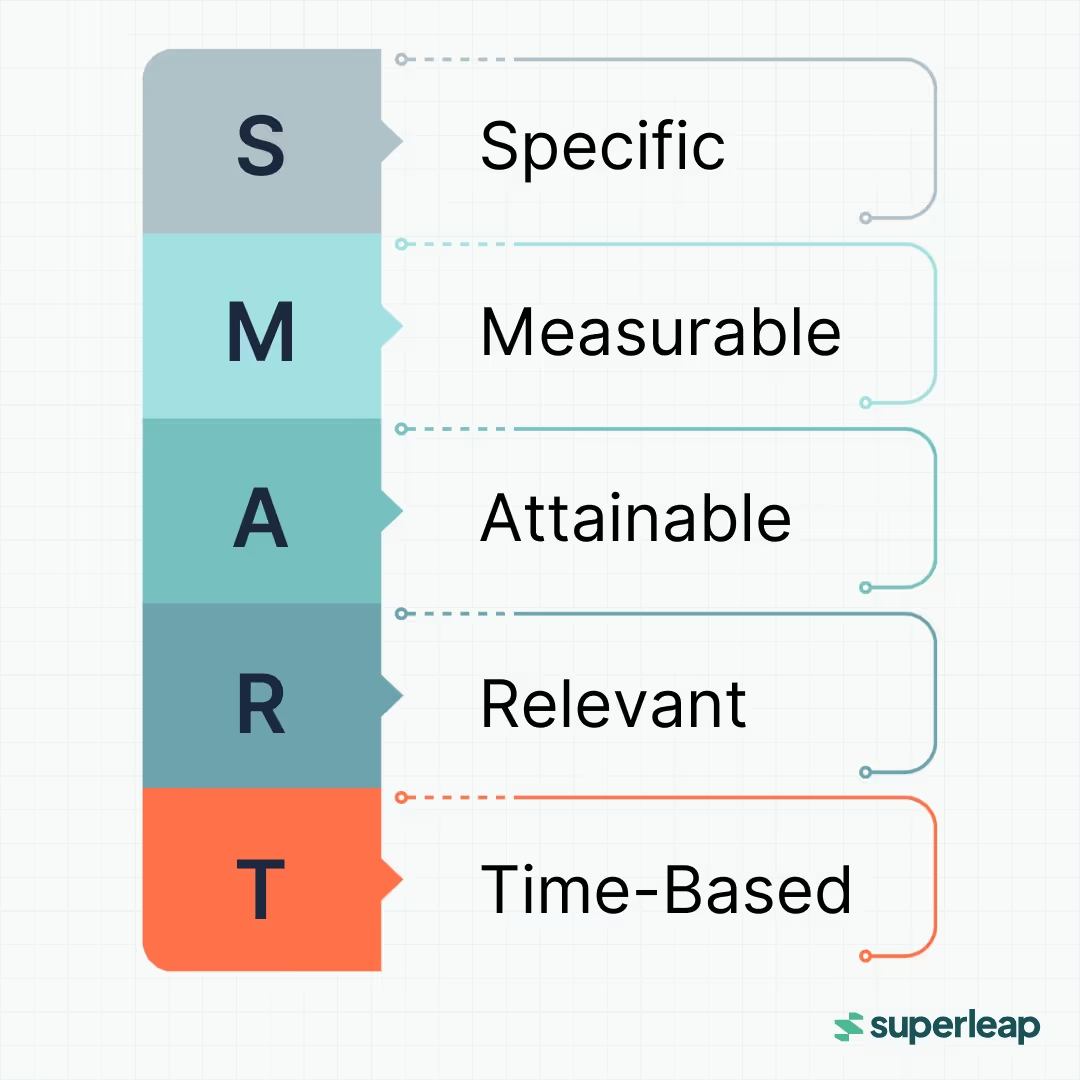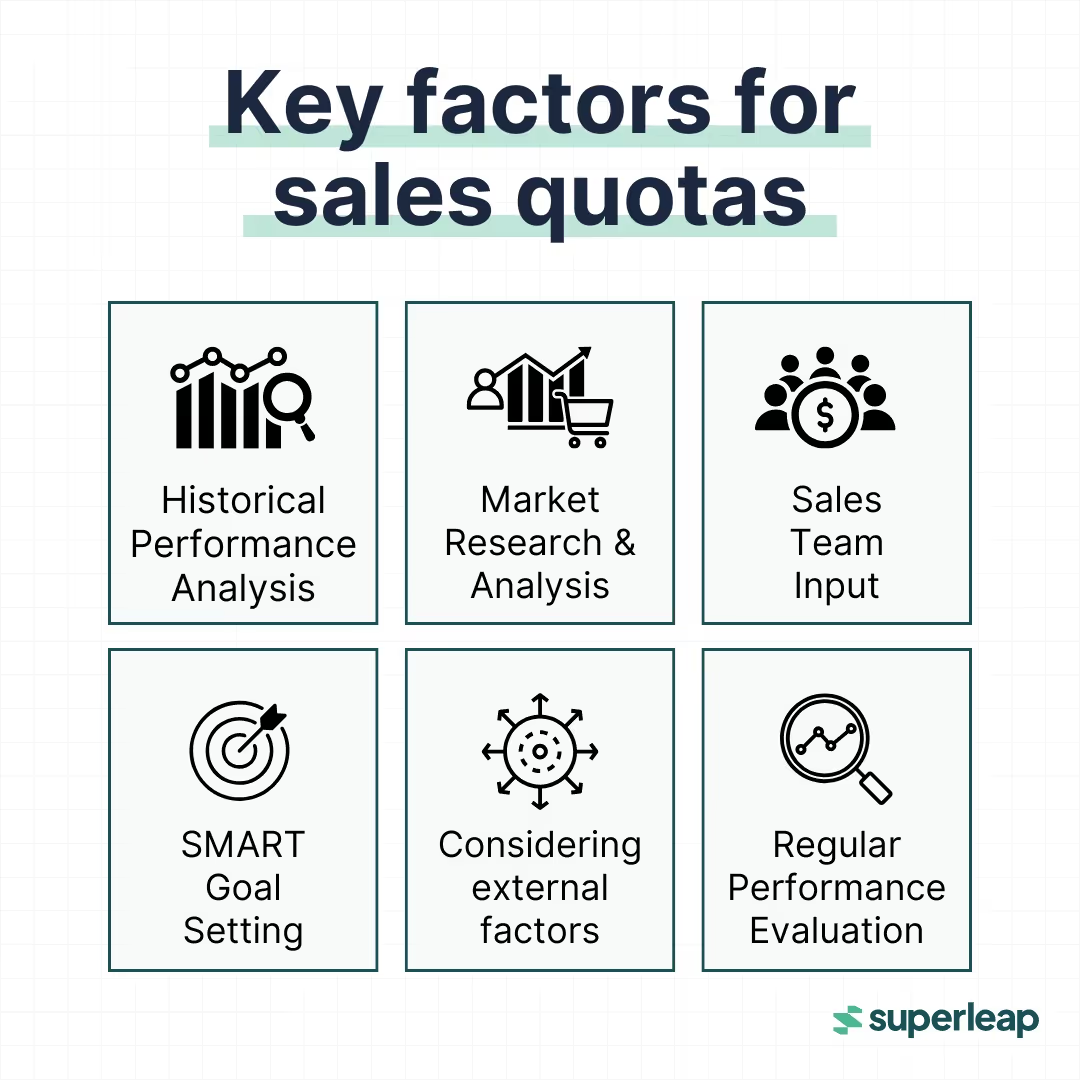

A little push or motivation can help people to do better no matter what the field of work. This applies to sales too. Sales reps tend to work better and harder when they have well defined quotas assigned to them. Quotas are specific targets that they need to achieve within a defined period of time and they get rewarded when they do.
As more reps achieve their sales quotas, the more the company benefits.
So, what exactly are quotas and how do they influence sales?
Let’s learn and understand the concept of sales quota in detail.
What is a sales quota?
As there was a minimum passing mark in school, similarly, sales quota acts as a minimum goal or target that sales reps need to achieve within a span of time.
A sales quota is a particular target or goal set for a salesperson or sales team that specifies the expected level of sales performance over a certain time period. It is used as a baseline for monitoring sales activity and productivity, as well as to guide sales efforts and tactics.
Keep reading to know more!

What are the common pitfalls in sales quota setting?
As a sales leader, establishing sales quotas for your team is a crucial task that can significantly impact your business's success. Setting appropriate quotas is essential, as targets that are either too lenient or overly ambitious can create challenges. Therefore, it's vital to approach quota setting carefully and avoid common errors to ensure balance and effectiveness.
Here's a breakdown of common mistakes to avoid while setting sales quotas:
1. Setting Unrealistic Quotas
Setting sales quotas that are too high or too low without considering market conditions, historical data, or team capabilities can lead to frustration or a lack of motivation among sales teams.
Solution: Use data-driven methods, such as analyzing past performance, market trends, and individual salesperson capabilities, to set challenging yet achievable quotas.
2. Overemphasis on Revenue Goals
Focusing solely on revenue volume while ignoring other critical metrics such as profitability and customer retention may result in poor-quality deals or over-discounting.
Solution: Incorporate a mix of metrics, such as margin contribution, new customer acquisition, or upselling, to balance priorities.
3. Failing to Adapt to Market Changes
If sales targets do not change even when market conditions do, like during recessions, new competitors, or product launches, sales teams will be faced with unattainable quotas or miss out on opportunities to capitalize on new trends.
Solution: Regularly review and adjust quotas to reflect current market realities and company goals.
4. Ignoring Team Input
Setting quotas without consulting the sales team or considering their on-the-ground insights reduces buy-in and may result in quotas that do not reflect real-world challenges.
Solution: Involve sales managers and representatives in the quota-setting process to ensure feasibility and engagement.
5. Lack of Tracking and Feedback Mechanisms
Not monitoring progress regularly or providing timely feedback on performance may cause teams to fall behind without realizing it or miss opportunities for course correction.
Solution: Implement real-time tracking tools and schedule regular check-ins to review progress and offer guidance to team members.
6. Neglecting Non-Sales Factors
Not considering factors beyond the sales team's control, like supply chain problems, marketing assistance, or seasonal variations in demand, unfairly punishes sales representatives and lowers their morale.
Solution: Consider external factors and adjust quotas or provide additional support whenever necessary.
What are the different types of sales quotas?
1. Volume Quota
A volume quota is a target set for a salesperson or sales team, measured in the number of units sold or the volume of products sold within a specific timeframe. This type of quota is often used in various industries to drive sales performance and ensure that sales teams meet company objectives.
Key Components of Volume Sales Quota
Example of Volume Quota
In automotive sales, a car dealership could set a volume sales quota for each salesperson to sell 20 cars in a month. If a salesperson sells 25 cars, they have surpassed their quota, potentially qualifying them for additional commissions or rewards.
2. Revenue Sales Quota
A revenue sales quota is a sales target set for an individual salesperson or sales team, defined in terms of the total revenue generated from sales within a specific period. This type of quota focuses on the financial aspect of sales, emphasising the importance of not just selling products or services but also generating income for the company.
Key Components of Revenue Sales Quota
Example of Revenue Sales Quota
A software company sets a revenue sales quota of $200,000 for each sales representative for the upcoming quarter. If a sales rep manages to close deals worth $250,000, they have not only met but exceeded their quota, which could lead to a performance bonus.
3. Activity Quota
An activity sales quota is a target set for salespeople or sales teams based on specific activities or behaviours that are expected to lead to sales outcomes. Rather than measuring performance solely by revenue or units sold, activity quotas focus on the actions taken by sales personnel to generate leads, engage customers, and ultimately drive sales.
Key Components of Activity Sales Quota
Example of Activity Sales Quota
A telemarketing team might have an activity quota of making 200 outbound calls per week. This quota focuses on maintaining a high level of outreach to generate leads and setting up appointments for further sales discussions.
4. Profit Quota
A profit sales quota is based on the profit generated from sales rather than just revenue or volume sold. This type of quota emphasises the importance of not only making sales but also ensuring that those sales contribute positively to the company’s profitability.
Key Components of Profit Sales Quota
Example of Profit Sales Quota
A marketing agency might establish a profit quota for its account managers to generate $75,000 in profit from client contracts over a quarter. This encourages managers to prioritise projects with higher profit margins, even if they require more upfront work.
5. Cost-Based Quota
A cost-based sales quota focuses on controlling or minimising costs associated with sales activities. These quotas encourage sales teams to consider the cost implications of their sales activities, promoting more efficient practices and improving profitability.
Key Components of Cost-Based Sales Quota
Example of Cost-Based Sales Quota
Telemarketing: A telemarketing firm sets a cost-based sales quota requiring each agent to keep their CPA under $50. This means that sales reps must ensure that they are targeting high-quality leads and minimising the time spent on less promising contacts.
6. Forecast Quota
A forecast sales quota is established for a salesperson or sales team based on predicted sales performance over a specific period. This type of quota relies on forecasting methods that take into account historical sales data, market trends, seasonal fluctuations, and other relevant factors to estimate future sales volumes.
Key Components of Forecast Sales Quota
Example of Forecast Sales Quota
Retail Store: A clothing retailer forecasts a sales quota of 10,000 units for a new line of apparel in the upcoming spring season. Sales associates are expected to achieve this target, and their performance is monitored against these forecasts.
7. Combination Quota
A combination sales quota is multifaceted in nature and incorporates various metrics to evaluate a salesperson's or sales team's performance. This type of quota combines different sales objectives such as revenue, volume, activity, and profit into a single goal.
Key Components of Combination Quota
Example of Combination Sales Quota
An insurance company could set a combination quota for its agents to:
- Generate $1 million in premium revenue
- Write at least 100 new policies
- Maintain a renewal rate of 85% or higher
This motivates agents to focus on acquiring new clients while also retaining existing ones, thereby balancing growth with customer loyalty.
What tips should be followed to achieve sales quotas?
In order to improve the sales quota performance, a combination of strategic planning, usage of effective sales techniques, and continuous adaptation to market changes are required. Here are some key strategies to help sales reps improve their sales quota performance:
1. Set Clear Goals
- Understanding Quota: Make sure you clearly understand the breakdown of your quota (e.g., monthly, quarterly, or yearly).
- SMART Goals: Ensure that your goals are specific, measurable, achievable, relevant, and time-bound. Set daily, weekly, and monthly targets so you can track your progress.

2. Improve Lead Generation
- Identify Ideal Customer Profiles (ICP): It's crucial that you know who your most valuable customers are and you can identify them by analysing past sales.
- Leverage Marketing: It’s essential to work closely with marketing teams to ensure that you get quality leads. This could involve aligning on content, messaging, and campaigns that target your ideal customer base.
- Use CRM Tools: Utilise customer relationship management (CRM) tools to keep track of leads and ensure no opportunities are missed out on.
3. Refine Your Sales Pitch
- Value Proposition: Tailor your pitch to clearly communicate the value your product or service provides. It’s important to focus on solving your prospects' pain points rather than just selling your product.
- Objection Handling: Make sure you’re well prepared to address common objections effectively. Anticipate concerns about price, product features, or other barriers and prepare thoughtful responses in advance.
- Personalization: Personalise your outreach and follow-ups to make the conversation with the prospect more engaging. Understand your prospects' needs and preferences before pitching.
4. Focus on Building Strong Customer Relationships
- Customer Retention: It’s important to focus not just on closing deals but also on maintaining long-term relationships. Happy customers are more likely to return and also give referrals.
- Regular Follow-ups: Create a follow-up routine that keeps you at the forefront of the prospect’s mind without coming across as intrusive. Conversion rates are raised via regular, valuable follow-ups.
5. Time Management and Prioritization
- Make it a point to prioritise high-value prospects and spend more time on activities that are likely to generate revenue (e.g., discovery calls, meetings, closing deals).
- Instead of switching between tasks frequently, batch similar activities (e.g., prospecting, follow-ups, and calls) to maximise focus and efficiency.
6. Use Data and Analytics
- Track KPIs: Continuously monitor key performance indicators (KPIs) such as lead conversion rate, average deal size, sales cycle length, and win rate. Analysing this data helps refine your sales approach.
- Analyse Past Wins/Losses: Study past sales to understand what worked well and what didn’t. Look for patterns that you can replicate or adjust to improve future performance.
7. Enhance Product Knowledge
- Make sure you’re always up-to-date on product features, benefits, and updates. The more knowledgeable you are, the more confident you’ll be during conversations with prospects.
- Be prepared to share real-world examples of how your product has benefited similar clients, as this can make your offer more appealing.
8. Collaborate with Your Team
- Collaborate with your sales team, sales manager, and cross-functional teams (e.g., marketing, customer success).This ensures that you're aligned on goals, strategies, and tactics.
9. Leverage Technology and Automation
- Sales Automation: Use tools like email sequencing and automated follow-up reminders to free up time for higher-level selling activities.
- AI and Analytics: Leverage AI-powered tools to analyze sales trends, automate data entry, and predict potential deals. This allows you to focus on more strategic tasks.
10. Optimize Your Sales Process
- Develop a sales playbook that includes your best practices, messaging, and steps for moving deals through the pipeline. Such a process ensures consistency and efficiency.
- Implement a clear qualification process (e.g., BANT, CHAMP, or MEDDIC) to identify the best prospects early in the sales process. This ensures that you're investing your time in high-quality opportunities.
11. Continuous Training and Self-Improvement
- Invest in sales training programs to continually refine your skills, whether it’s negotiation tactics, objection handling, or emotional intelligence.
- Take out time to engage in role-playing exercises to practice and improve your pitch and objection handling in a low-pressure environment.

How can companies support their sales teams in achieving their quotas?
Supporting sales staff in achieving their quotas is crucial for maximising performance and morale. Here are several effective strategies that companies and employers can implement for the same:
1. Comprehensive Training and Development
Provide thorough onboarding for new sales staff and also offer regular training sessions on new products, industry trends, and sales strategies to keep the team informed.
2. Access to Resources and Tools
Equip sales teams with customer relationship management (CRM) software to help them track leads, manage relationships, and analyse performance. It’s also fruitful to provide access to tools that assist with presentations, proposals, and product information, making it easier for sales reps to communicate value.
3. Setting Realistic and Achievable Quotas
Companies should aim to use historical data and market research to set achievable quotas, ensuring that they are challenging yet attainable.
4. Regular Feedback and Performance Reviews
Conducting regular check-ins with sales staff to discuss progress, challenges, and strategies can lead to overall improvement.
5. Motivational Incentives
Companies should aim to offer attractive commission structures and bonuses for exceeding quotas to encourage sales reps to perform better.
6. Encouraging Team Collaboration
Setting team-based quotas alongside individual targets will encourage collaboration and shared success.
Pairing less experienced sales reps with mentors who can provide guidance and support based on their experience will encourage collaborative progress.
7. Promoting Work-Life Balance
When employers offer flexible hours or remote work options, it can help sales staff manage their time and reduce overall stress.
8. Aligning Marketing and Sales Teams Efforts
It’s important to ensure that marketing and sales teams work together on lead generation strategies. This will guarantee that sales reps are provided with quality leads that are more likely to convert.
Heading text
Nunc sed faucibus bibendum feugiat sed interdum. Ipsum egestas condimentum mi massa. In tincidunt pharetra consectetur sed duis facilisis metus. Etiam egestas in nec sed et. Quis lobortis at sit dictum eget nibh tortor commodo cursus.
Odio felis sagittis, morbi feugiat tortor vitae feugiat fusce aliquet. Nam elementum urna nisi aliquet erat dolor enim. Ornare id morbi eget ipsum. Aliquam senectus neque ut id eget consectetur dictum. Donec posuere pharetra odio consequat scelerisque et, nunc tortor.
Nulla adipiscing erat a erat. Condimentum lorem posuere gravida enim posuere cursus diam.
.svg)






